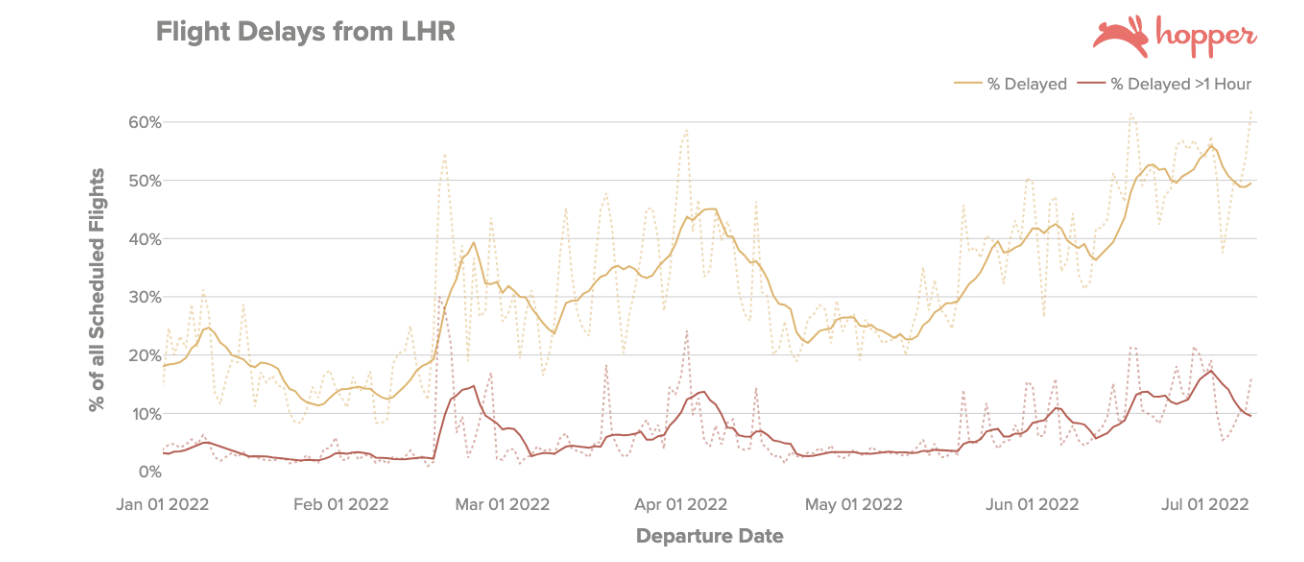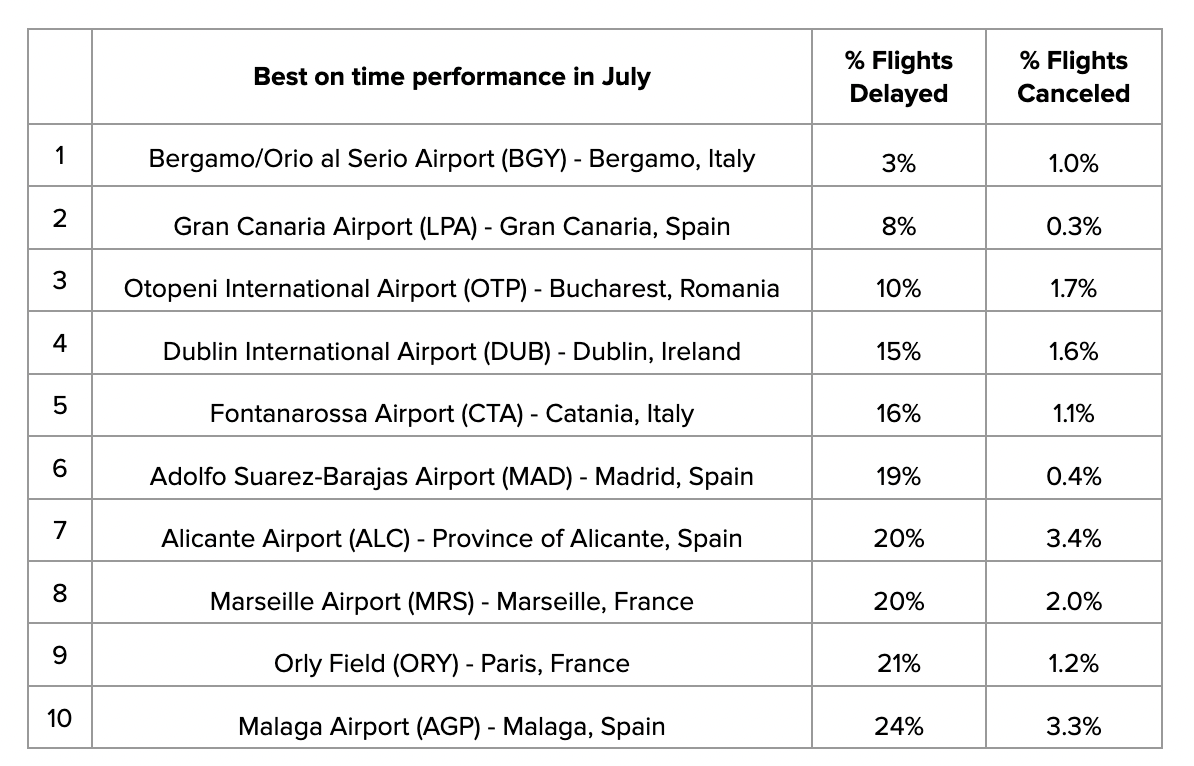Major disruption plaguing European airports during peak summer months
London Heathrow (LHR) announced earlier today that they will limit the sale of tickets for flights through September to help reduce the number of travelers this summer.

Hayley Berg - Tue Jul 12 2022

This week, London Heathrow (LHR) airport announced they will limit the number of passengers who can depart from the airport from now (mid July) through mid September. This announcement comes after other European airports like Amsterdam’s Schiphol (AMS) airport have announced their own limitations on passenger traffic, as a result of long lines and mass delays and cancellations plaguing the airports.
Heathrow announcement comes after weeks of growing disruption
Heathrow’s announcement comes as half of flights have been delayed departing from the airport since the beginning of July, peaking last Saturday with over 62% of flights delayed. Though delay and cancellation rates typically rise somewhat in busy summer months, performance this year marks a 78% increase in delays compared to summer of 2019.

Cancellations departing from LHR have also risen dramatically in recent months; with 3.5% of flights departing from LHR canceled in July, almost 3x the rate in July of 2019. Cancellation rates peaked earlier this month at nearly 6% of all departing flights canceled.

Disruption plaguing airports across Europe this summer
Heathrow is not alone in requesting airline schedule adjustments as a result of widespread delays, cancellations and hours long lines at security checkpoints. Both airlines and airports across Europe have struggled to meet the surging demand for travel resulting from nearly 2 years of closed borders and depressed travel during the highest waves of the covid-19 pandemic. Airlines have struggled to service scheduled flights on time, or at all, as they cope with staffing shortages on the ground and in-flight. Airports have struggled with staffing shortages which have left passengers in hours-long lines for security checkpoints and customer service.
This month Brussels (BRU), Frankfurt (FRA) and Eindhoven (EIN) airports have reported the worst on time performance of major European airports, with more than two thirds of flights delayed and at Frankfurt International Airport, almost 8% of departing flights canceled. Not all airports are seeing such significant disruption this month, with Bergamo (BGY), Dublin (DUB) and Madrid (MAD) airports reporting less than 20% of flights delayed and less than 2% canceled on departure.


How to plan for disruptions & what to know before traveling to Europe this summer?
Be flexible with the dates you fly - If you are trying to get to the UK, the tactics that will save you the most money will also save you the most headache. In the last three weeks alone, departures early in the week on Monday or Tuesday were delayed ~21% less often than on the peak Saturdays. Fly midweek, on Monday or Tuesday, avoid the expensive and crowded weekend days.

Fly early in the day -Being on the first flight out can help reduce the change your flight will be disrupted. Delays and cancellations can compound throughout the day, more significantly impacting later flights.
Consider regional airports - Between Gatwick, Stansted, Luton and more, there are many other airports in the London area that travelers can fly into. The UK’s train system can help fill any gaps for travelers who decide to fly into regional airports.
Purchase a Flight Disruption Guarantee - Flights are going to be full because of this reduction in capacity and it’s the busy summer season. The odds you get out on the next available flight are low, which is why Flight Disruption Guarantee is so appealing. With Flight Disruption Guarantee, if you experience a disruption, you can rebook immediately on ANY carrier & get out on the next flight for free, or receive a refund. Hopper has seen a 31% increase in travelers adding Flight Disruption Guarantee to their bookings in recent weeks.
Build in a buffer day - It’s always a good idea to add in an extra day or two to your travel plans, to ensure you can arrive at your destination on time (and with some wiggle room).
Get the Hopper app to find the best deals.
You could save up to 40% on your next flight!
